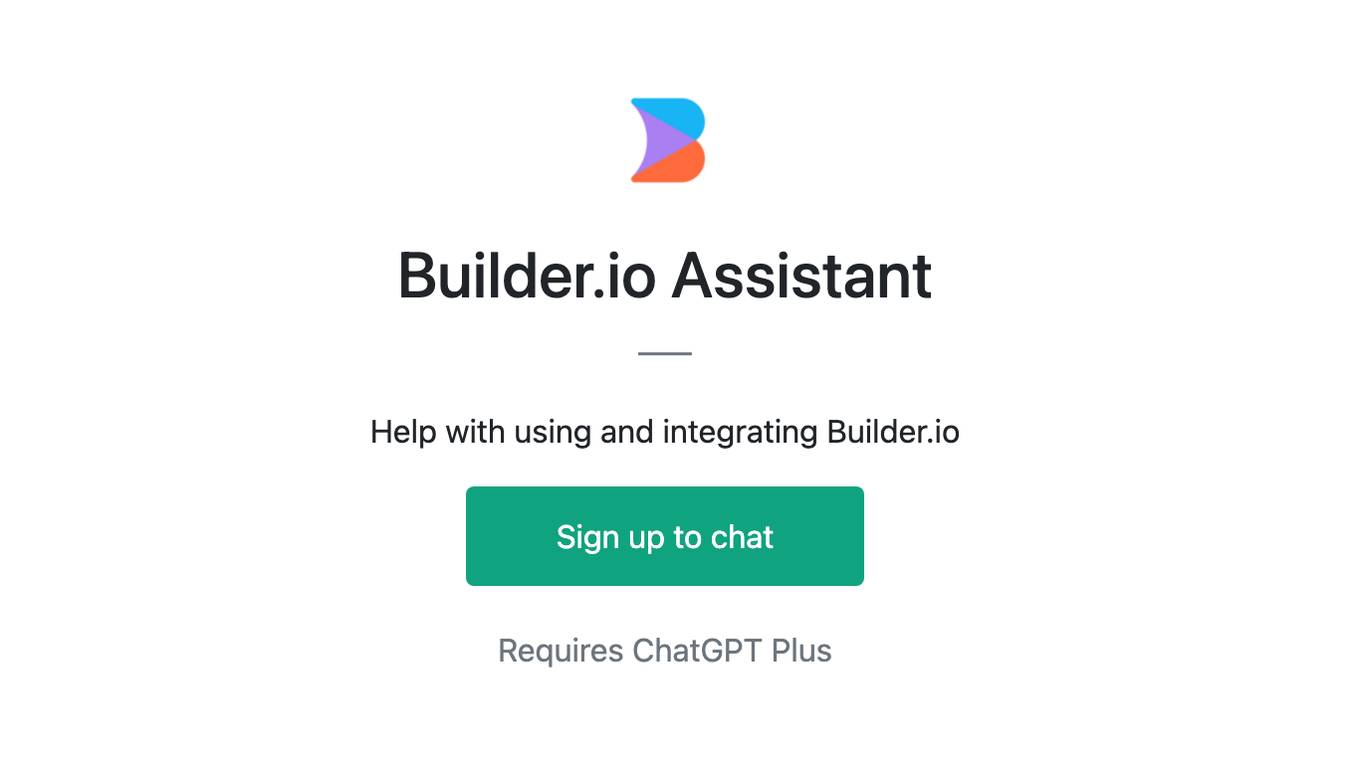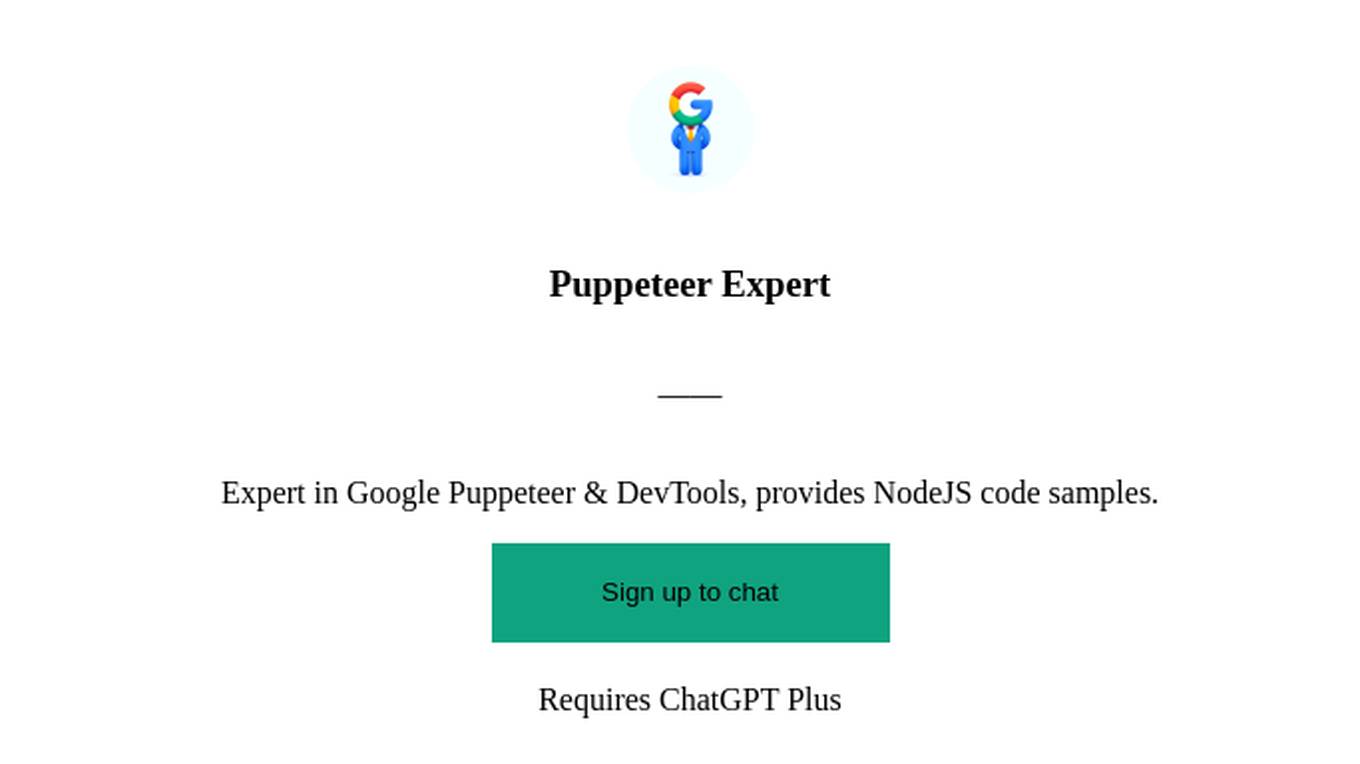Best AI tools for< Headless Platform Developer >
Infographic
9 - AI tool Sites
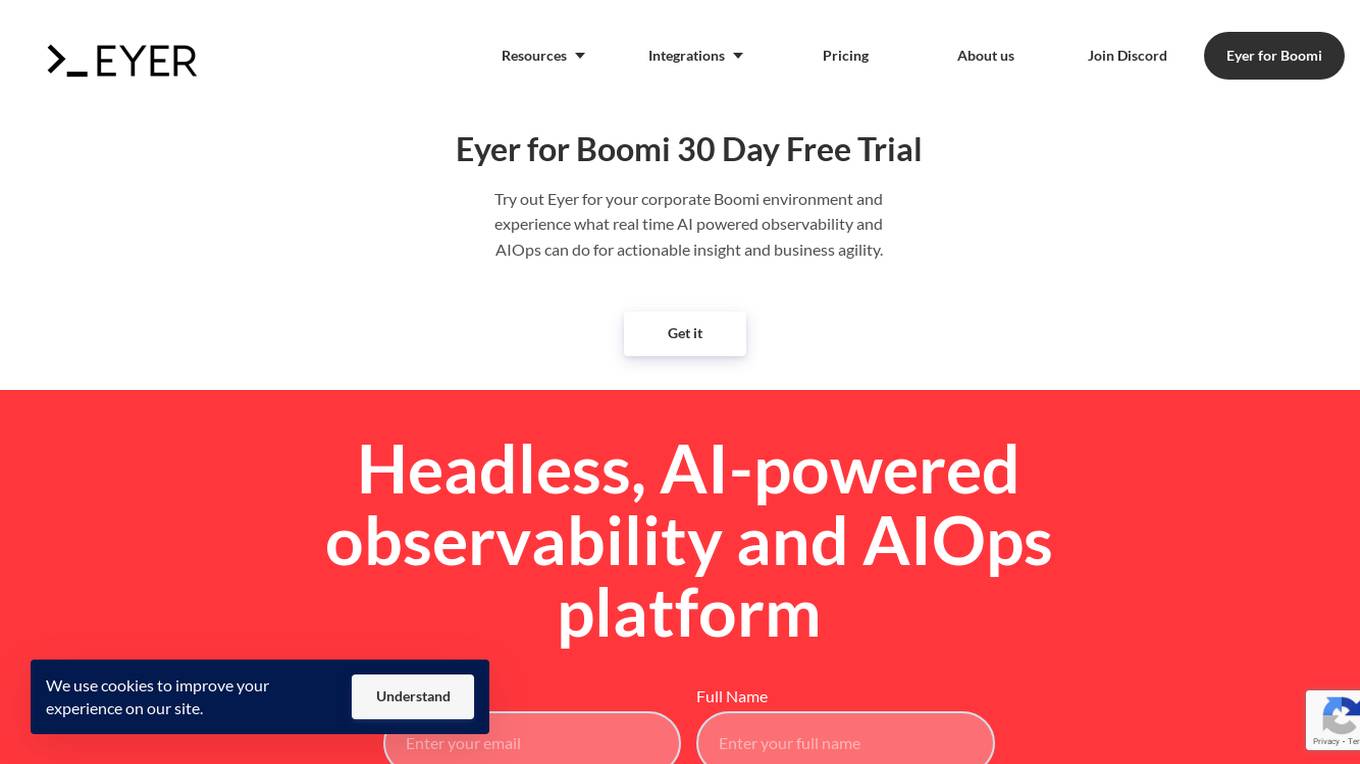
Eyer
Eyer is a headless AIOps platform that offers automated observability and actionable insights through AI-powered anomaly detection. It allows users to integrate with various systems using Open APIs and provides fast time-to-value by automating manual tasks and improving IT operation efficiency. Eyer supports integrations with tools like Boomi, Grafana, BizTalk, and Influx Telegraf, enabling users to monitor and manage their systems effectively.
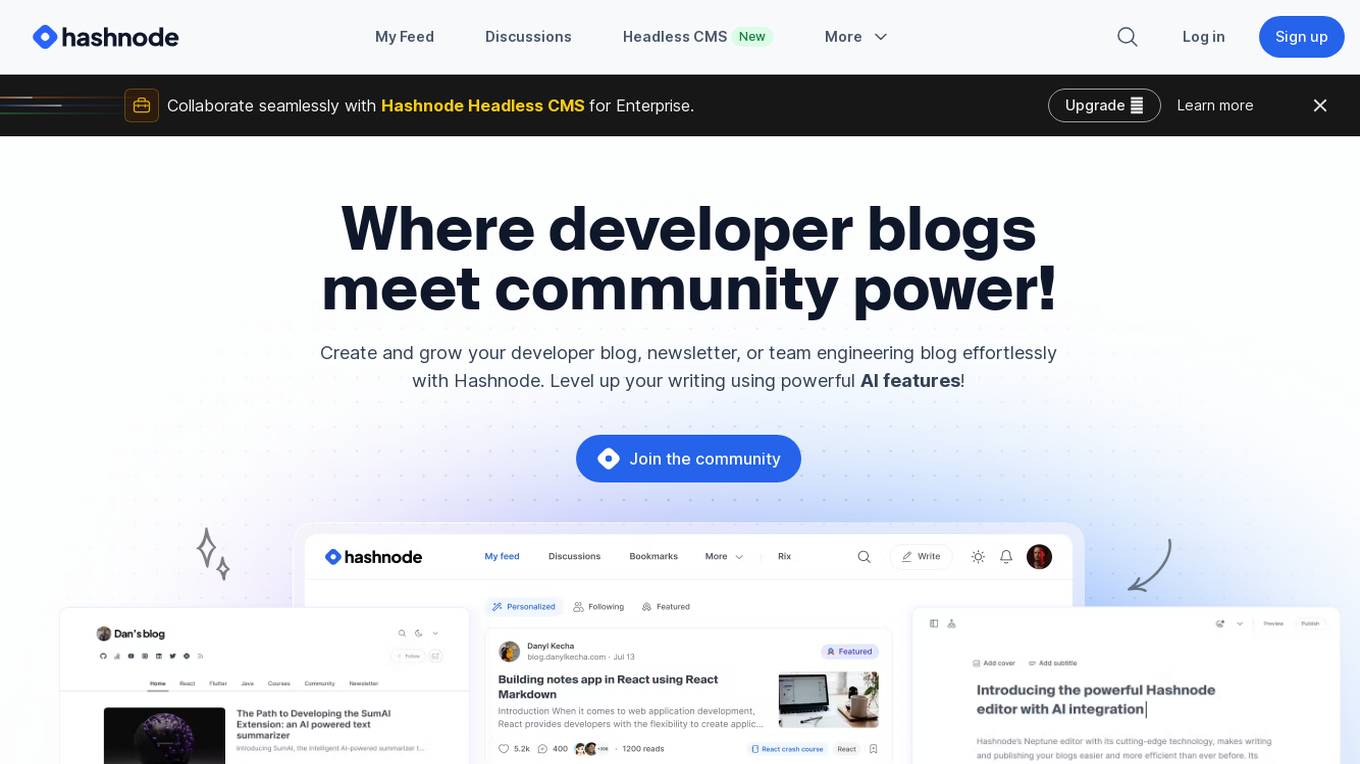
Hashnode
Hashnode is a blogging platform optimized for software developers and technical writers. It offers features such as a custom domain, sub-path, hosted/headless CMS, and powerful AI features to help users create and grow their developer blogs, newsletters, or team engineering blogs effortlessly. Hashnode's platform is designed to be fast, SEO-optimized, and user-friendly, providing developers with a seamless blogging experience.
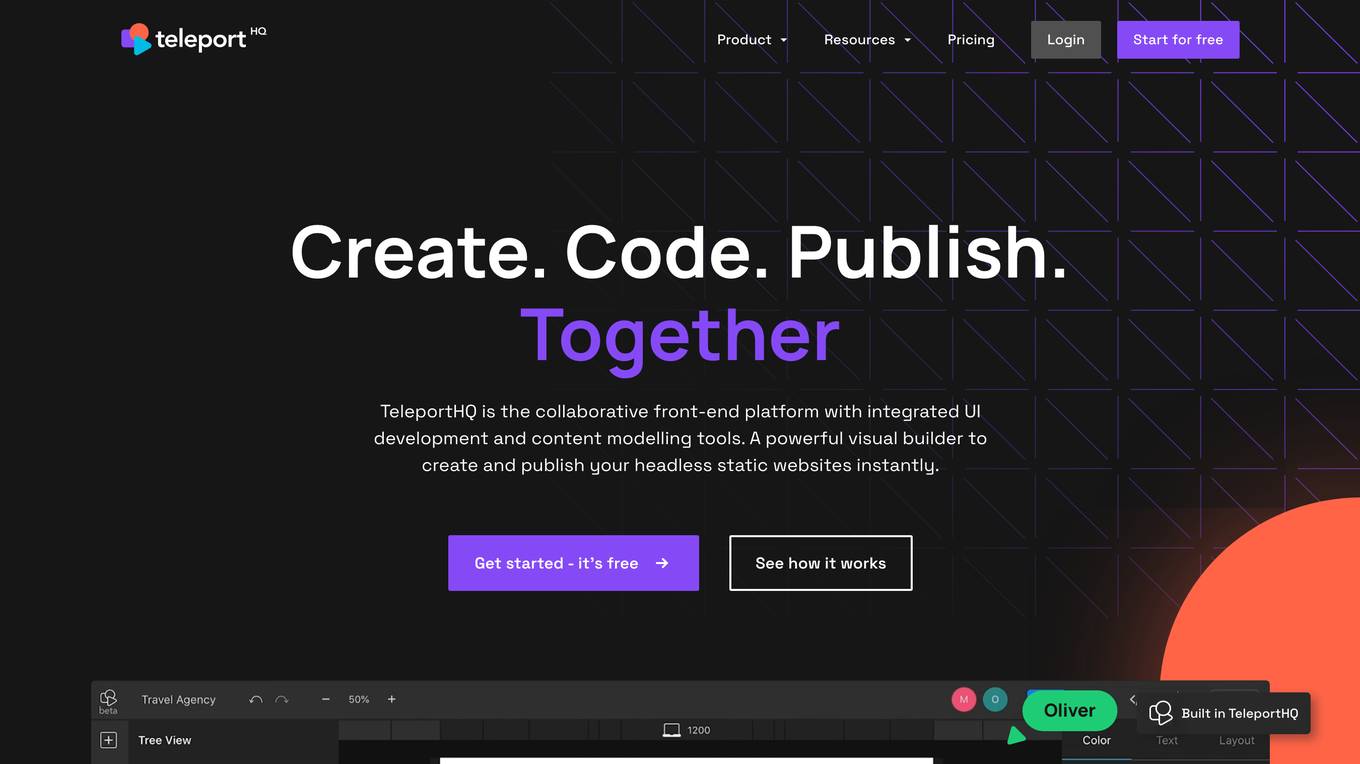
TeleportHQ
TeleportHQ is a collaborative front-end platform that provides tools for UI development and content modeling. It offers a visual builder for creating and publishing static websites, headless CMS integrations, and Figma plugin for importing designs. TeleportHQ enables seamless collaboration between designers and developers, allowing them to create responsive websites, components, and interfaces. It also provides code collaboration tools, code generators, and a powerful front-end UI editor for customization. With TeleportHQ, teams can build, collaborate, and ship production-ready code faster.

Crownpeak
Crownpeak is an AI-powered Digital Experience Platform that focuses on content management, product discovery, and digital accessibility and quality. The platform offers personalized content, AI-driven commerce search, merchandising, and recommendations to enhance the buyer's journey. Crownpeak's DXP is designed for marketers and IT leaders, providing flexibility, scalability, and accessibility for creating valuable consumer experiences. The platform features composable solutions for flexible integrations, hybrid headless content management, and AI-powered product discovery solutions. Crownpeak also emphasizes accessibility, data management, and quality to ensure compliance and create inclusive digital experiences.
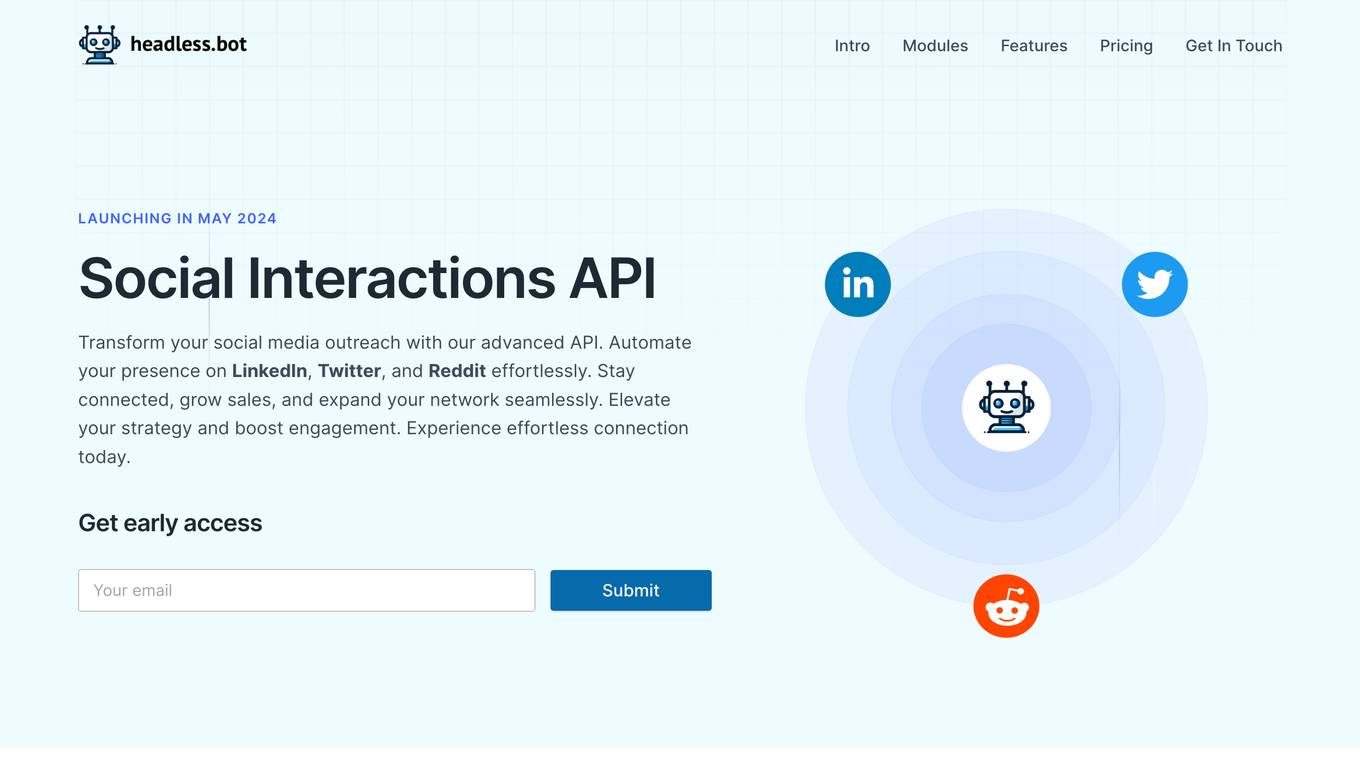
Headless bot automation API
This headless bot automation API empowers users to automate their social media presence on LinkedIn, Twitter, and Reddit. It offers a range of features to enhance social media outreach, including automated connections, likes, messages, tweets, comments, and more. The API prioritizes safety and authenticity with its advanced bot script and custom undetectable browser, ensuring that interactions mimic human behavior and remain compliant. Additionally, premium residential proxy access safeguards online presence and maintains anonymity. The pricing model is straightforward, with a single plan providing access to all features across all supported platforms.
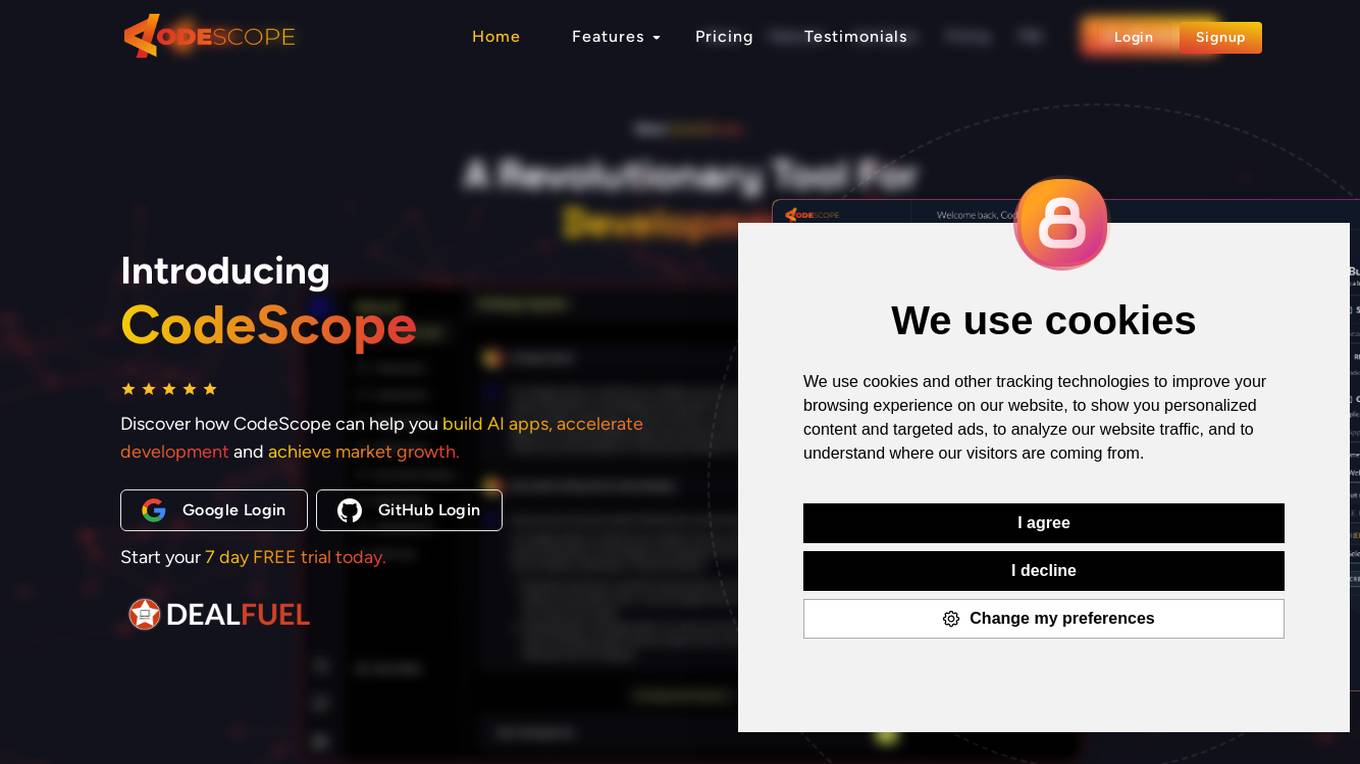
CodeScope
CodeScope is an AI tool designed to help users build and edit incredible AI applications. It offers features like one-click code and SEO performance optimization, AI app builder, API creation, headless CMS, development tools, and SEO reporting. CodeScope aims to revolutionize the development workflow by providing a comprehensive solution for developers and marketers to enhance collaboration and efficiency in the digital development and marketing landscape.
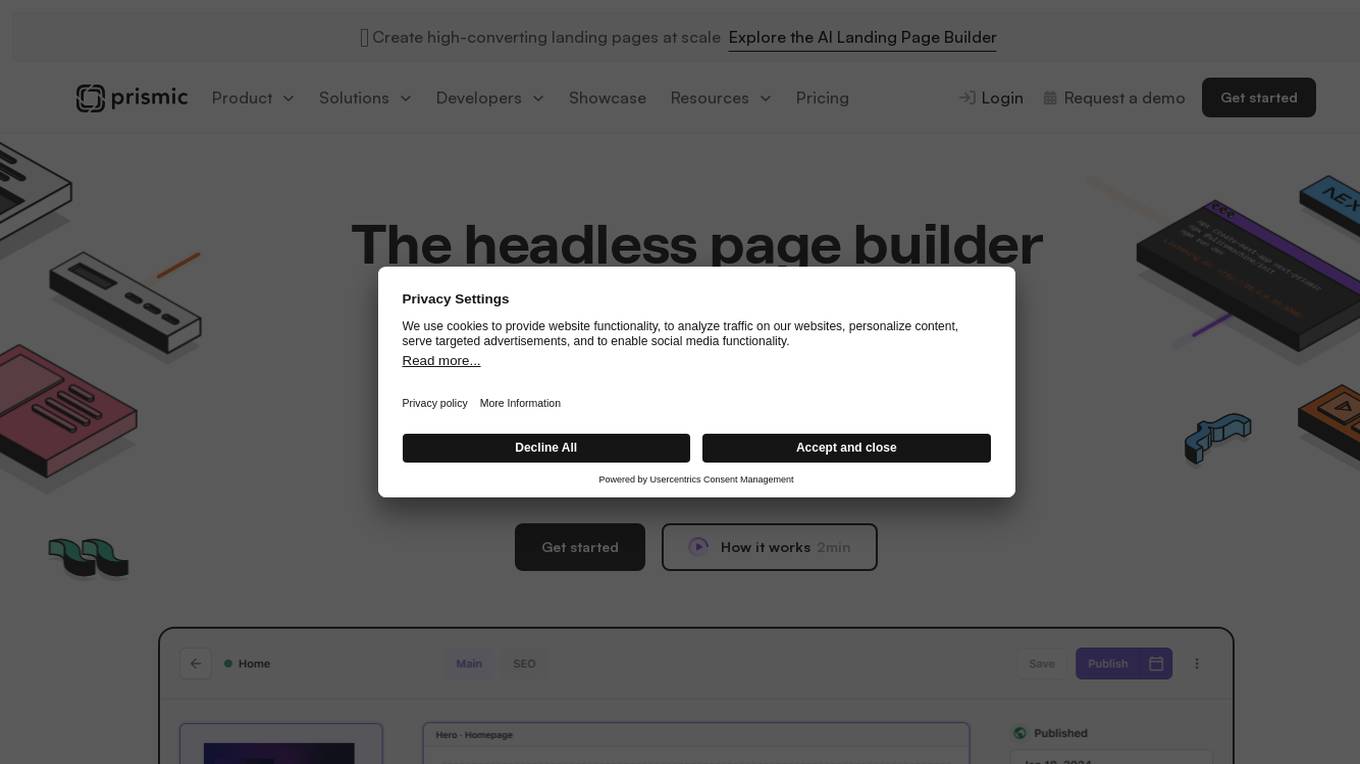
Prismic
Prismic is an AI-powered headless page builder designed for Next.js, Nuxt, and SvelteKit sites. It empowers marketing teams to create high-converting landing pages quickly while maintaining brand consistency. With features like live previews, dynamic visual page builder, and scheduled releases, Prismic streamlines the process of publishing on-brand pages. For developers, Prismic offers a developer tool to build pre-approved components and automate repetitive tasks, resulting in faster website development. The application also includes a local developer tool for structuring content, defining components, and pushing them to the Page Builder, reducing time to launch by 65%.
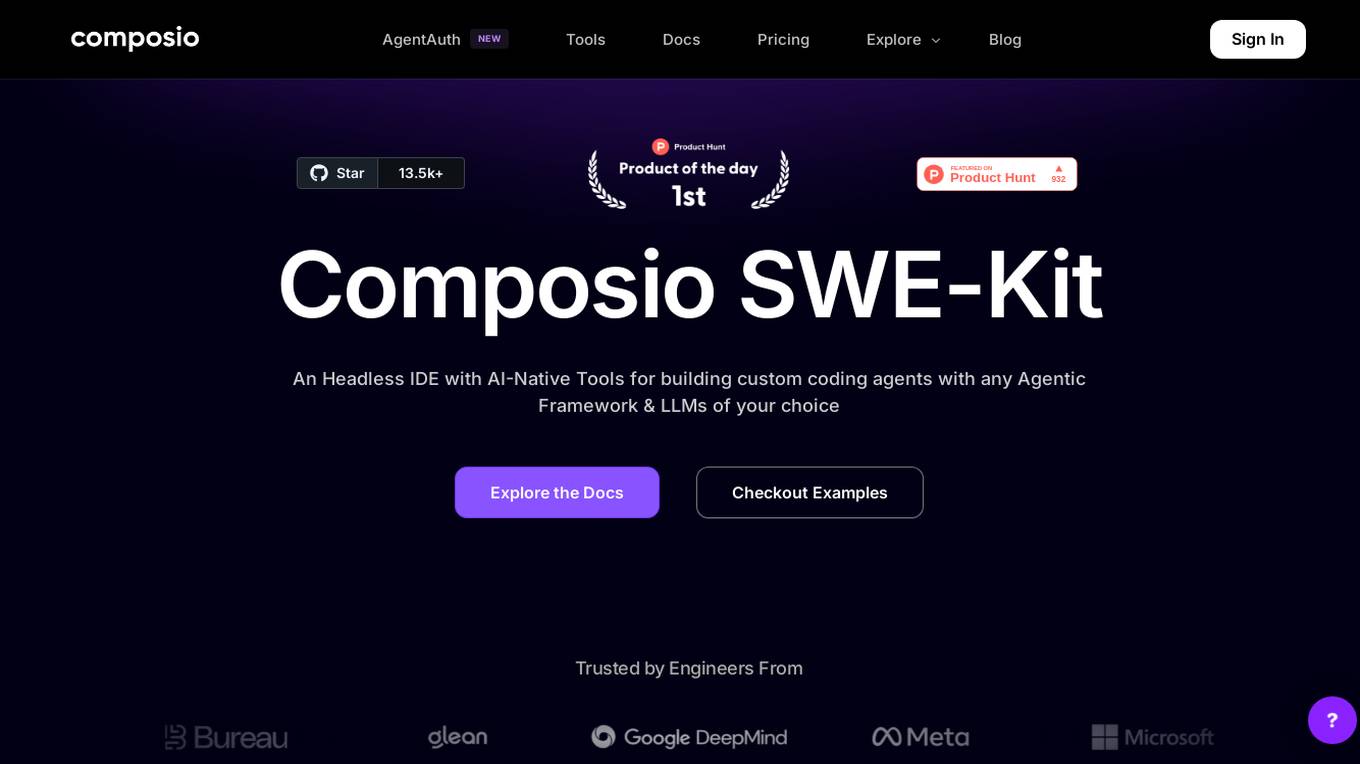
SWE Kit
SWE Kit is an open-source headless IDE designed for building custom coding agents with state-of-the-art performance. It offers AI-native tools to streamline the coding review process, enhance code quality, and optimize development efficiency. The application supports various agentic frameworks and LLM inference providers, providing a flexible runtime environment for seamless codebase interaction. With features like code analysis, code indexing, and third-party service integrations, SWE Kit empowers developers to create and run coding agents effortlessly.
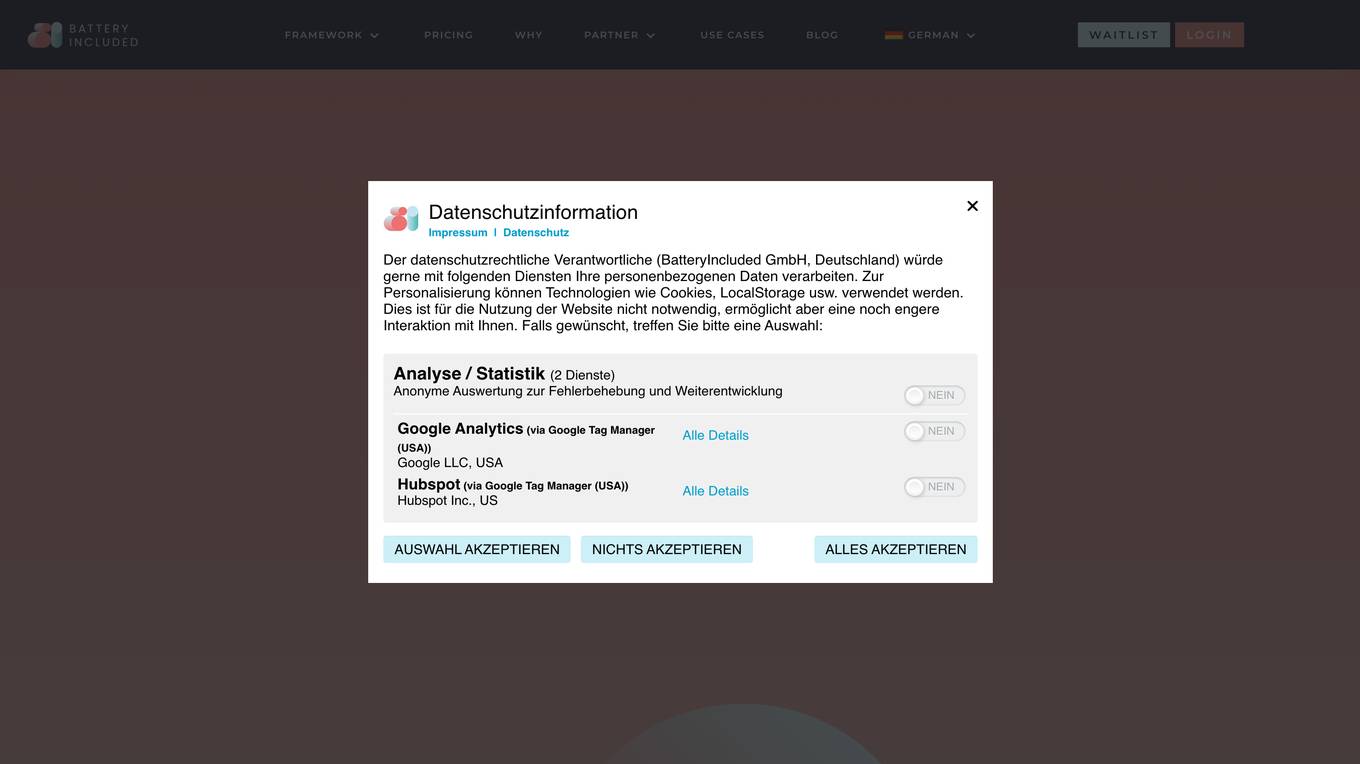
BatteryIncluded
BatteryIncluded is an AI-powered data discovery framework that helps businesses create highly relevant product lists for their online stores. It uses real-time raw data aggregation, advanced AI algorithms, and natural language processing to deliver personalized shopping experiences for users. BatteryIncluded's modular architecture and flexible API allow for easy integration with existing systems and headless frontends, providing businesses with full control and flexibility.
0 - Open Source Tools
3 - OpenAI Gpts

The Innovation Thought Leader
Thought leadership for innovative, complex, AI-based brands trying to be culturally relevant in the dense omnichannel ecosystem of headless platforms
